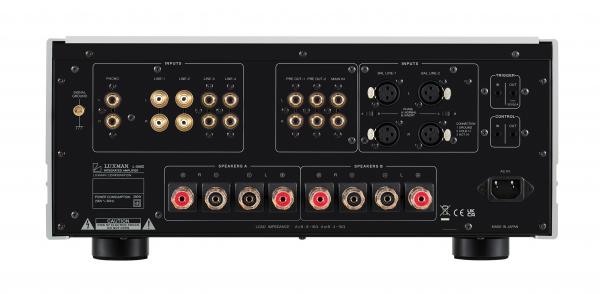Luxman L-509Z Page 3

Mono maestro
Surprise followed surprise, a series of revelations even with familiar material. The Paul Butterfield Band’s eponymous 1965 debut [Music On Vinyl MOVLP823] is the opposite of Joe Henderson’s album, all raw, fiery blues, and Luxman’s L-509Z endowed the set – recorded with some haste to capture the live feel – with the most open soundstage one could desire, equal to how a small jazz ensemble fills a room.
Better still were the positions of the two main instruments – Butterfield’s blues harp and Mike Bloomfield’s guitar, as if positioned on their own plane, developing a true 3D sound with depth and substance. That said, I could not have predicted this amp’s mono reproduction. I have heard Ben E. King’s ‘Stand By Me’ countless times, but on the new mono ‘Atlantic 75’ pressing of Don’t Play That Song! [Atco RCV1 142] the soundstage was so rounded and full that I thought they had mislabelled the sleeve. Maybe Phil Spector was onto something. The L-509Z made the gap between mono and stereo somehow meaningless.
Sit back and relax
If I were to meet the following criteria – aspiring to own no-nonsense but also no-compromise amplification and in possession of £11k – this integrated amp would be on my shortlist. There are separates with more slam, more forcefulness. The space-poor could argue for an onboard DAC. I even understand those who crave ultra-exclusive esoterica from companies with two employees and a penchant for quirkiness and zero visibility.
Conversely, I appreciate how some music lovers need stability, and will succumb to the appeal of the more established houses like the 99-year-old Luxman. But neither stance matters once you switch on this absolute honey of an amp. How so? Because the peace of mind the absurdly melodious L-509Z imparts allows you to do something no self-immolating amp can do. It lets you relax... to just enjoy the music.
Hi-fi News verdict
Purists will hate me for citing the ‘wrong’ reasons for loving Luxman’s L-509Z, but it’s valid – this amplifier oozes competence in every way. Built like a Leica camera, everything works without fuss. It’s feature-laden, accepts as many sources as a sane person needs, and it’s ‘analogue’ in the truest sense: just line and phono inputs, with digital an
add-on. Oops, I nearly forgot...
the sound is utterly sublime.
Sound Quality: 88%


























































